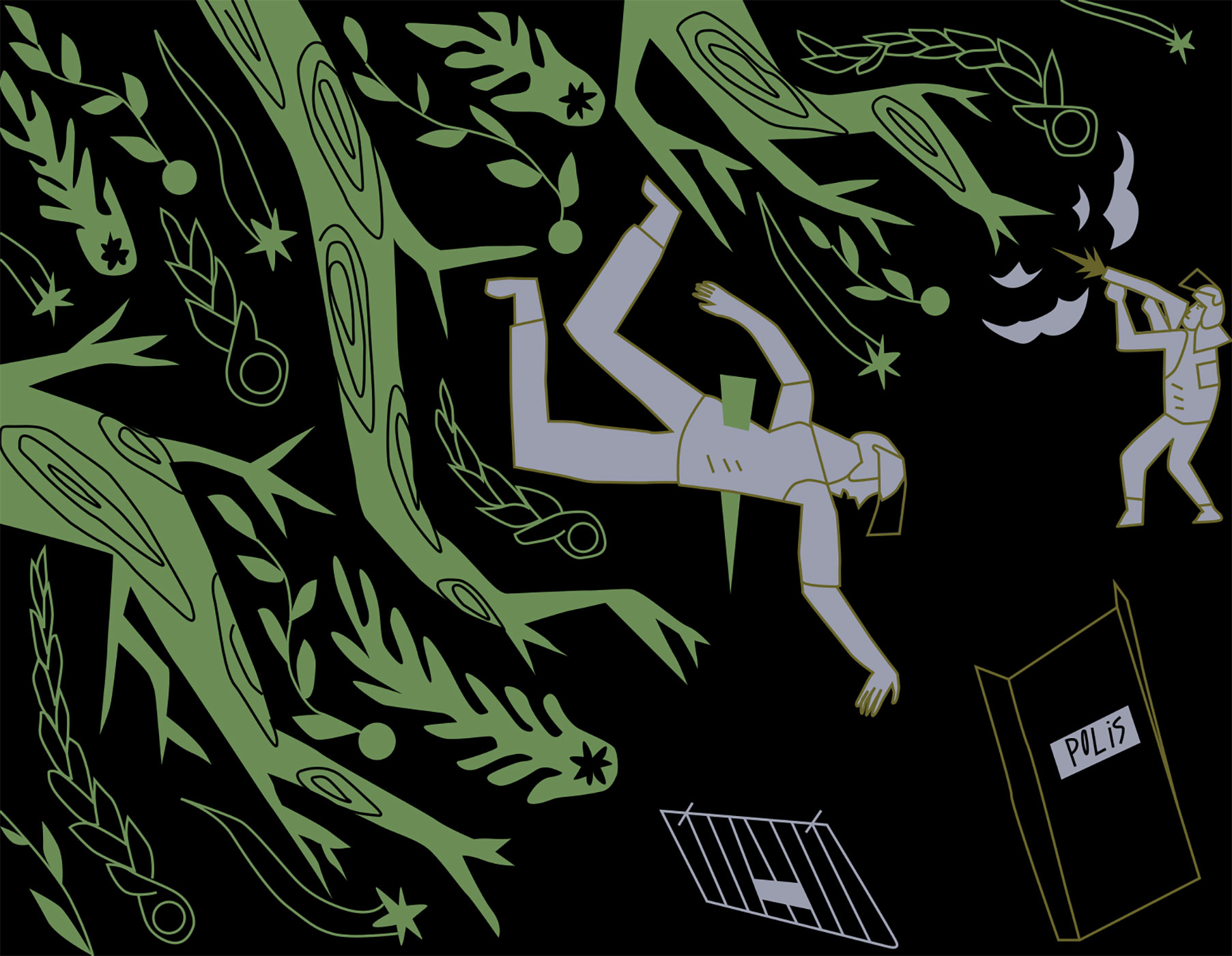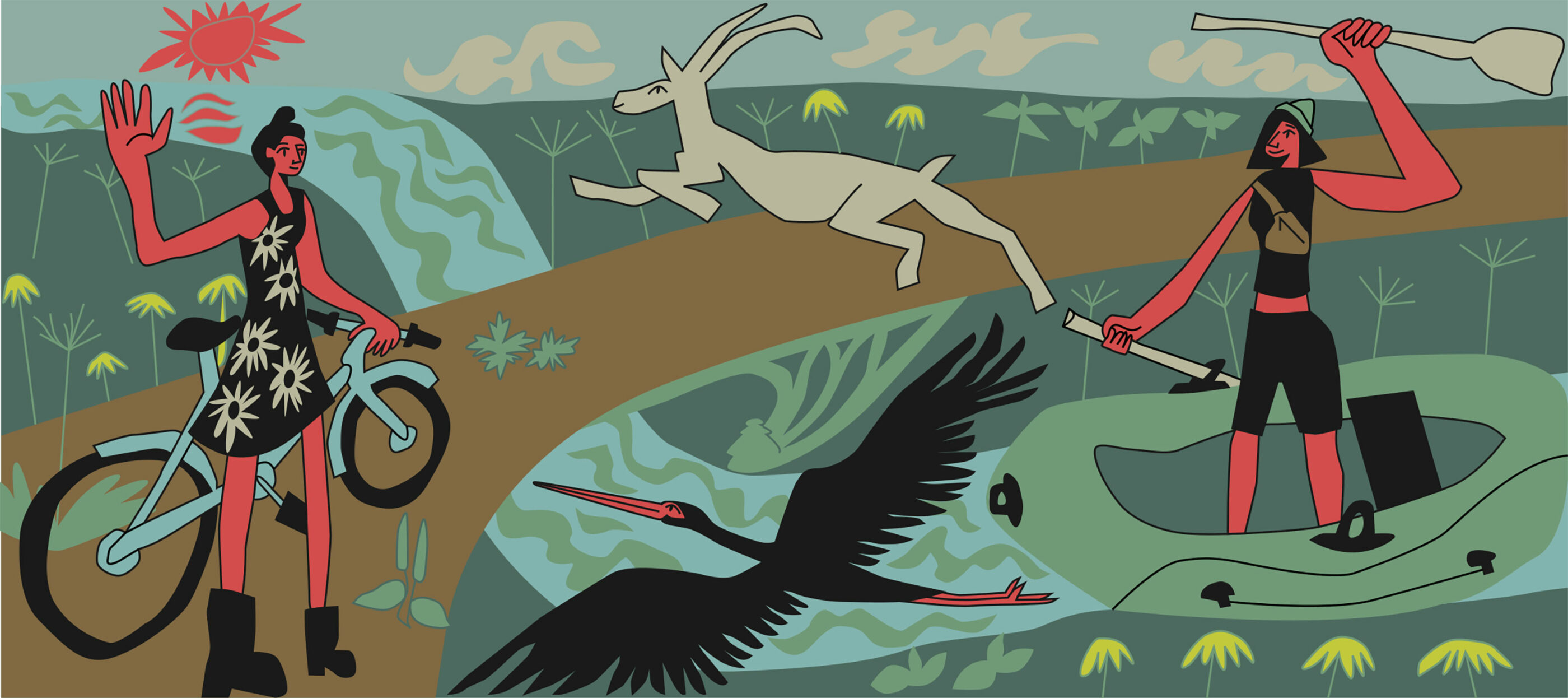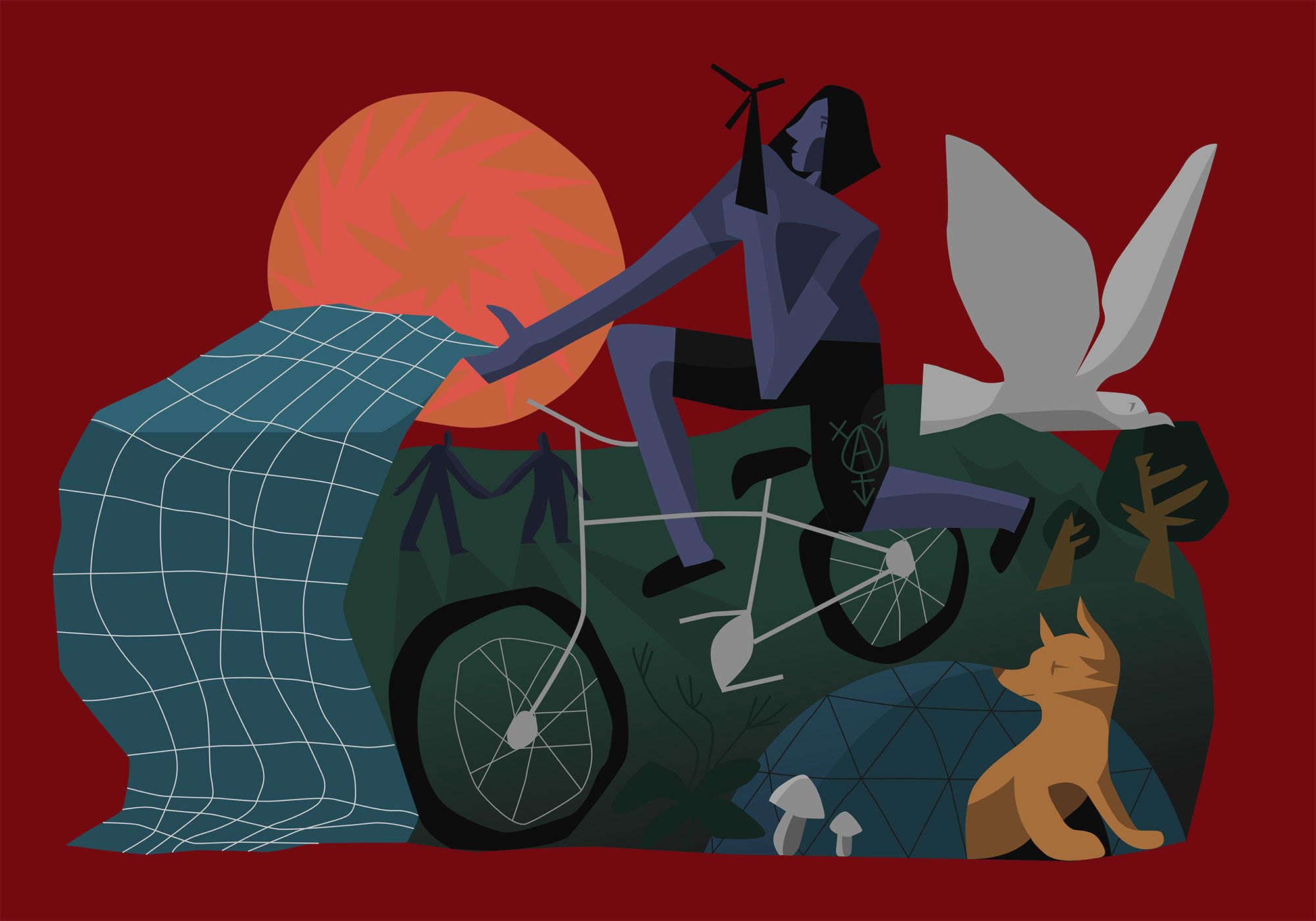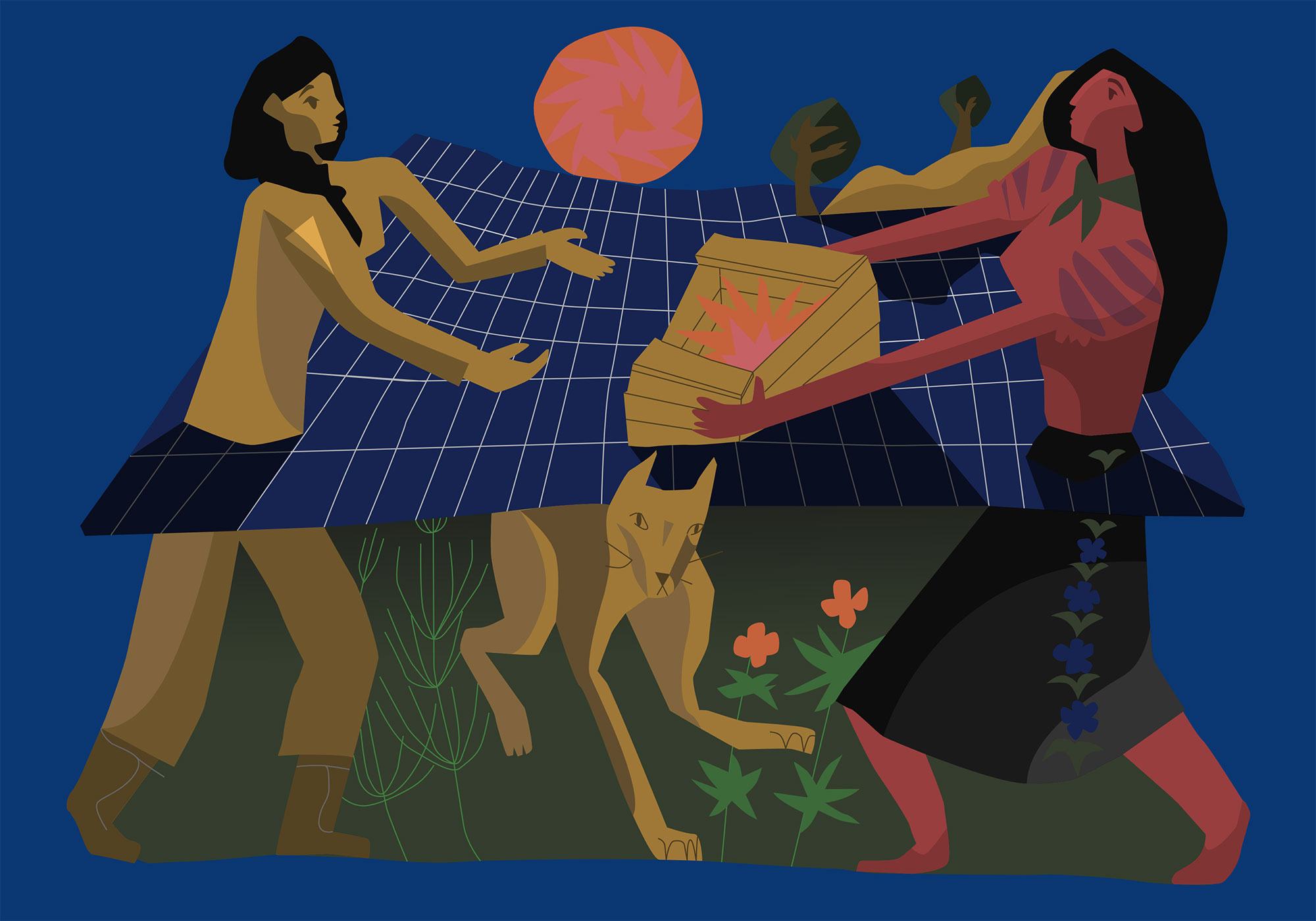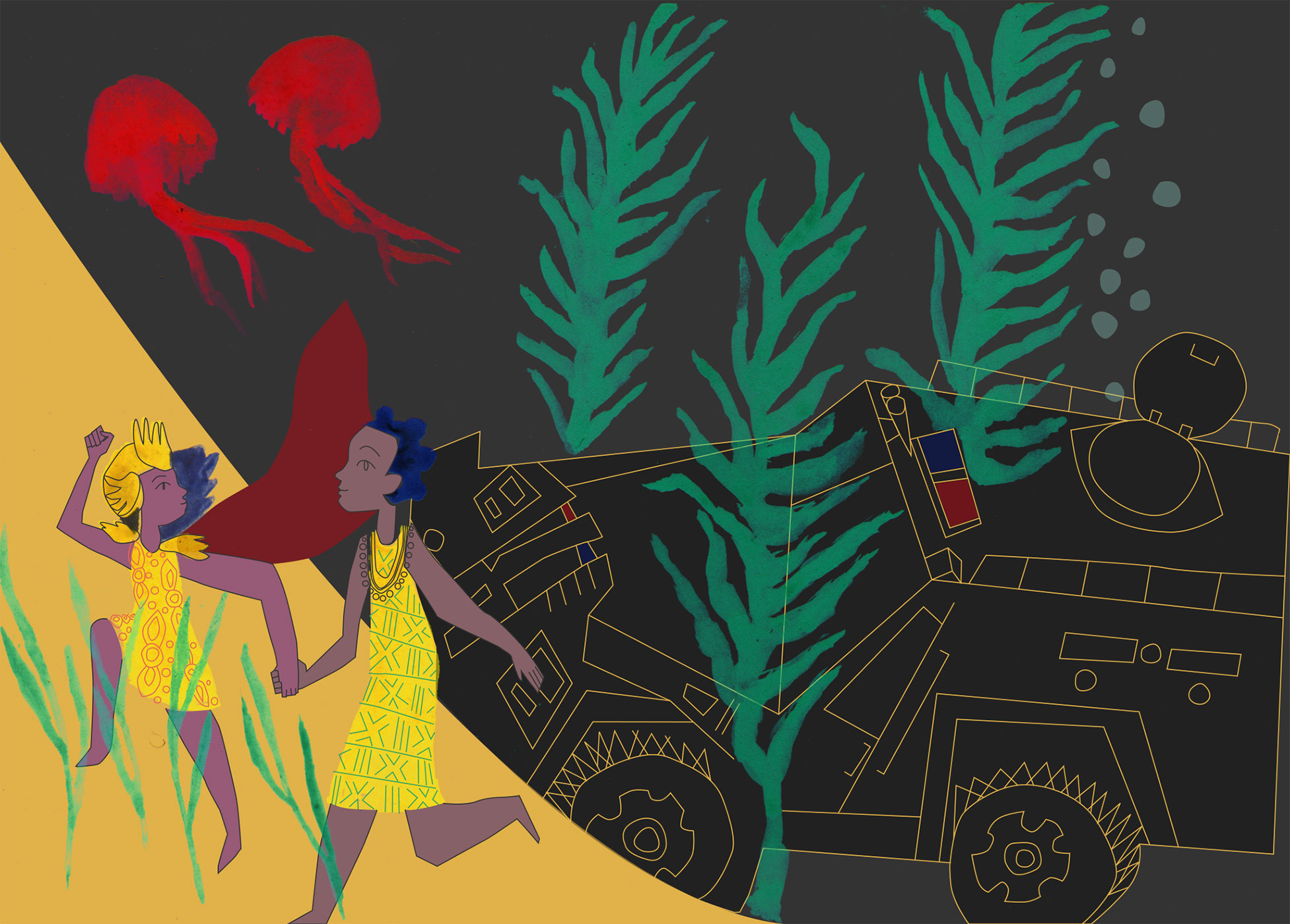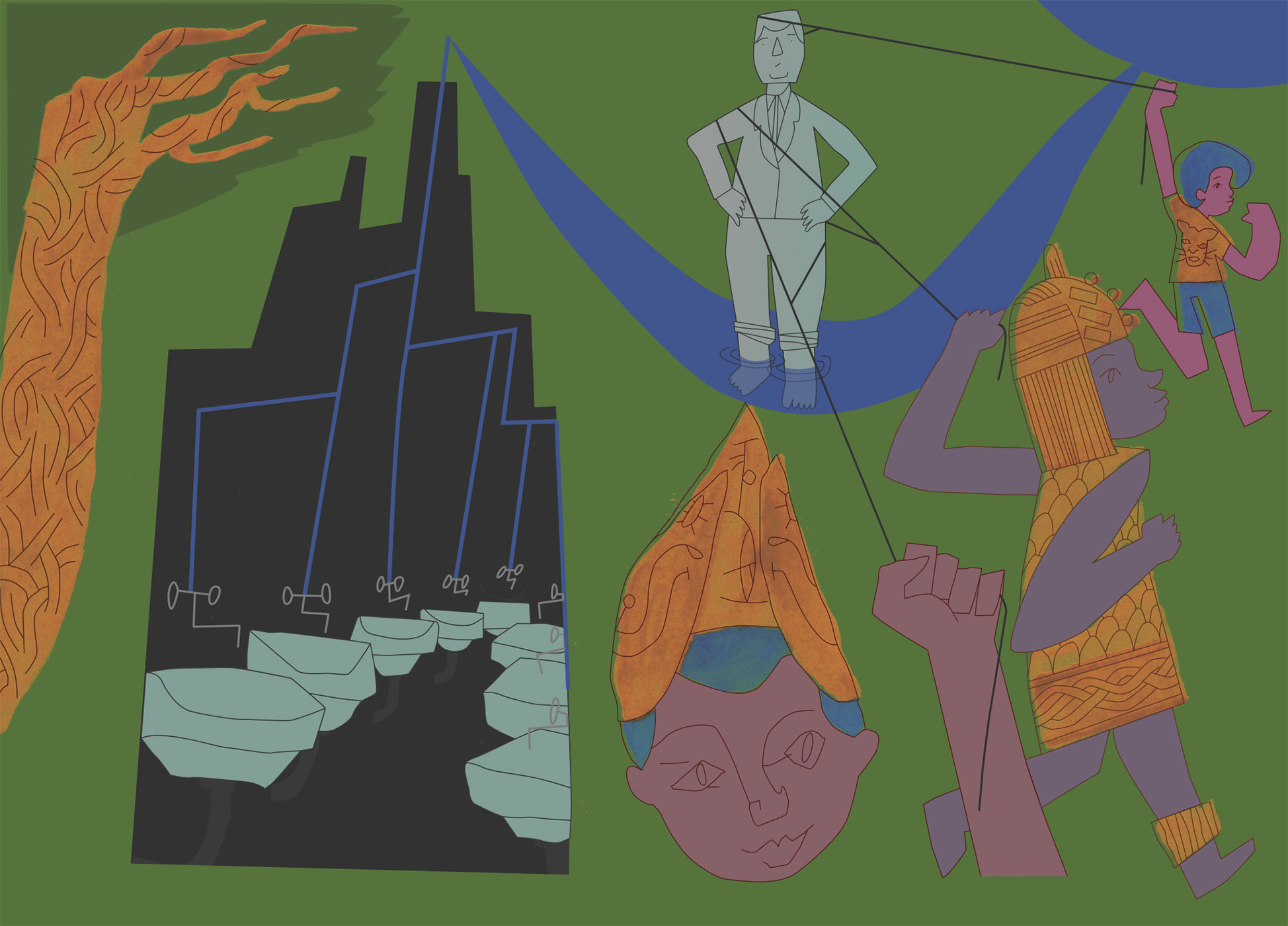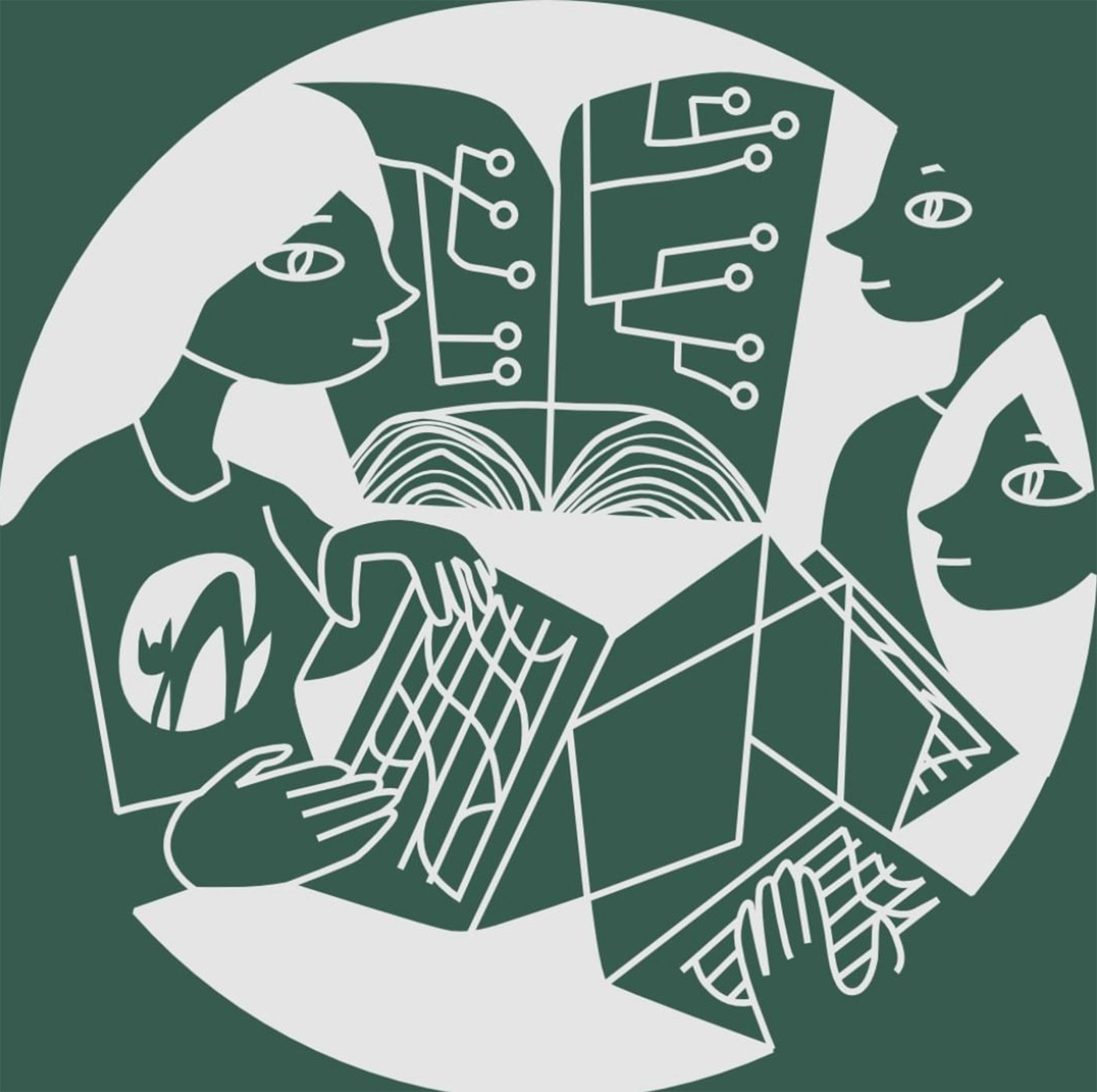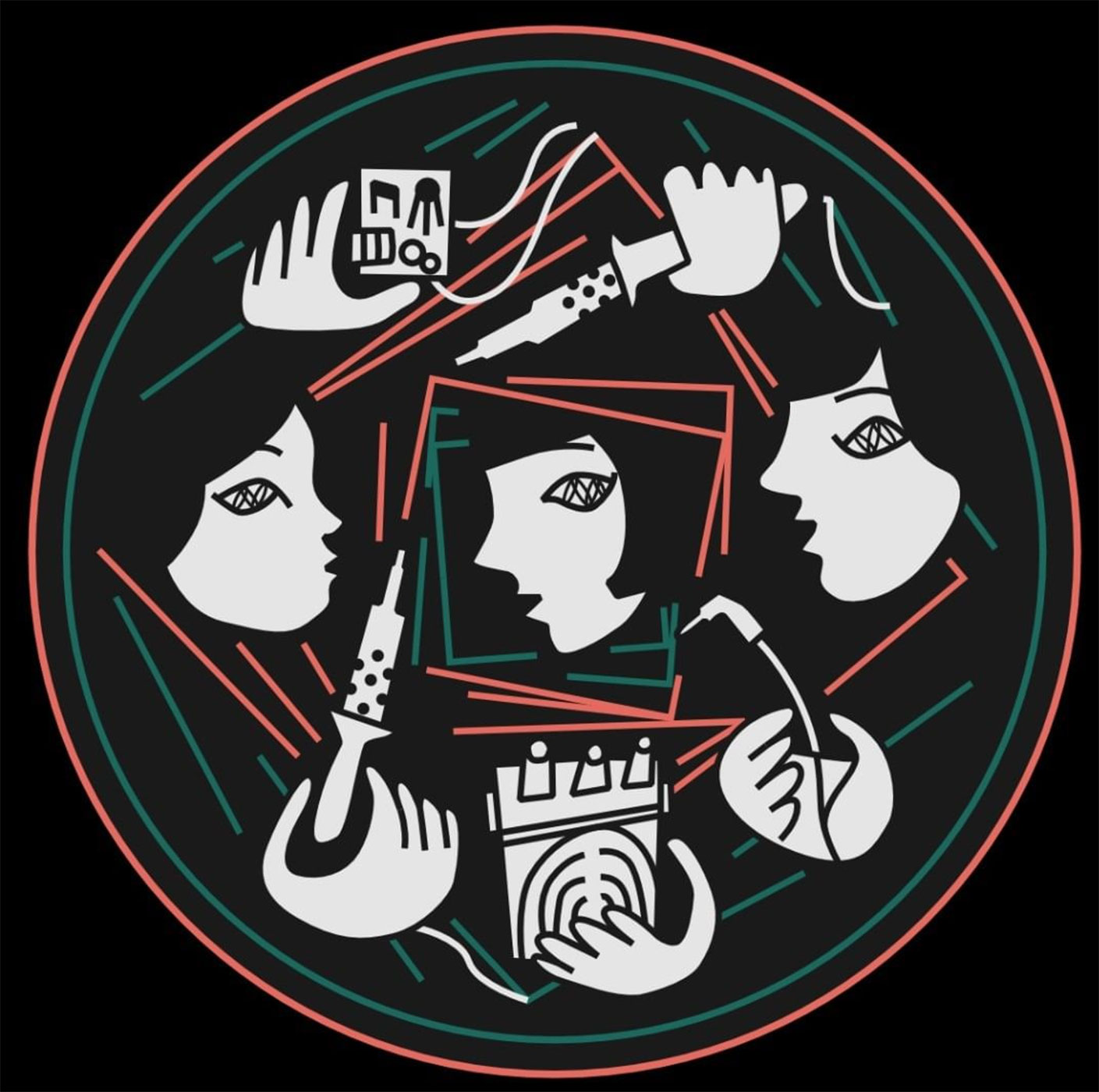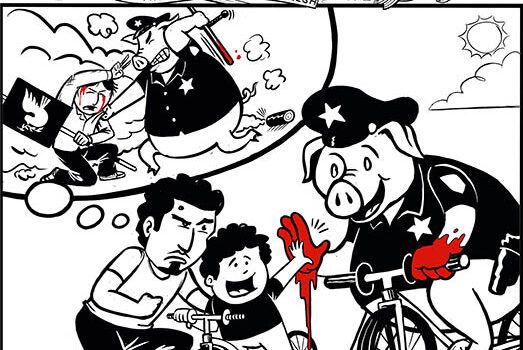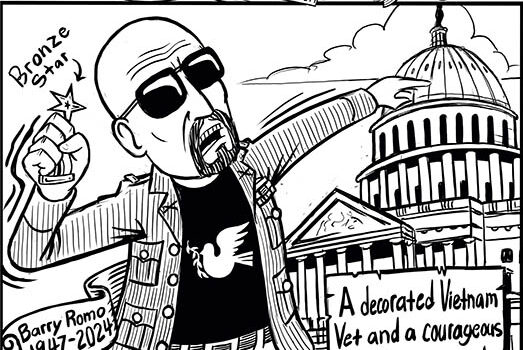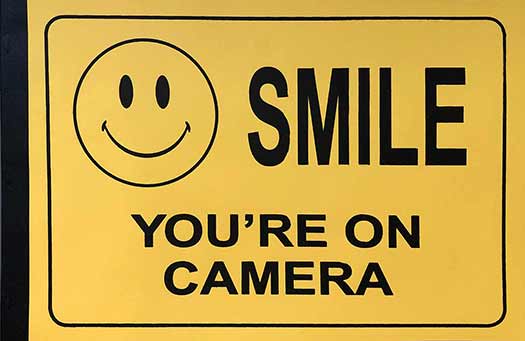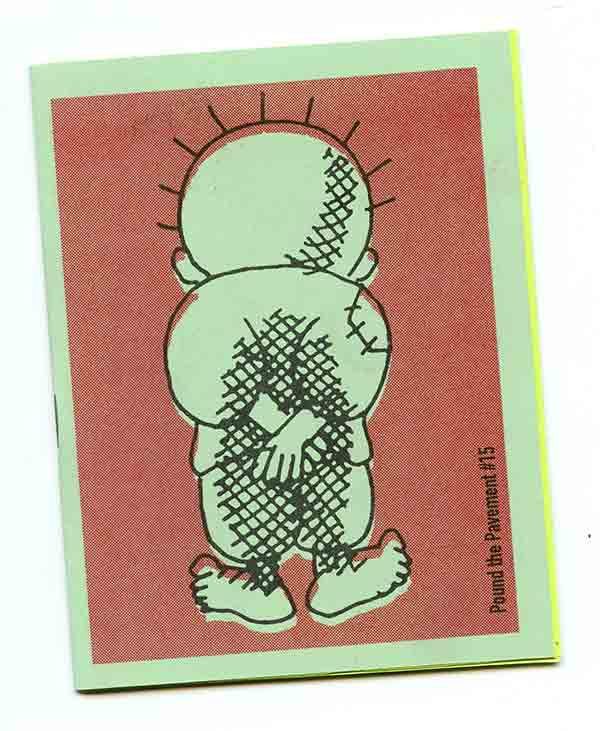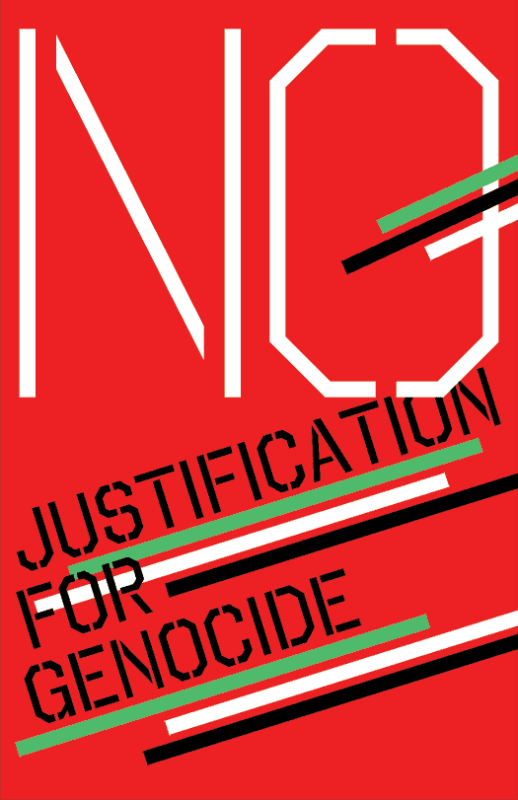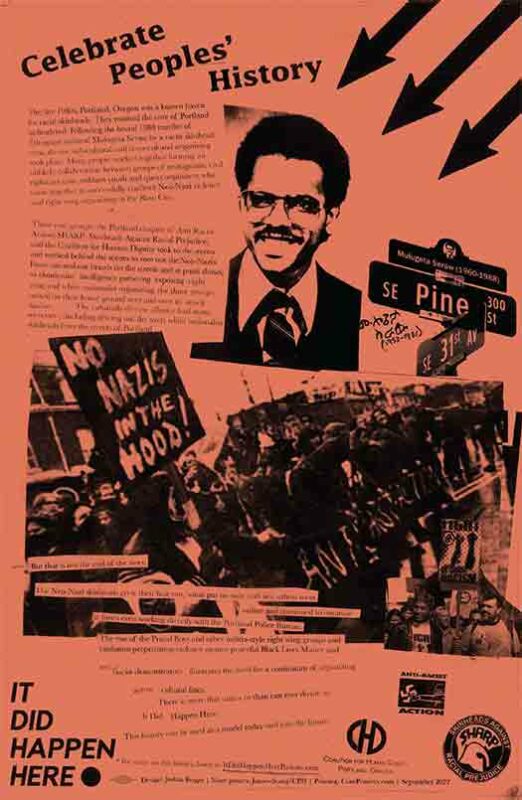This is our fourth post in an ongoing interview series with current political artists working around the world. We are excited this time to feature eevan kochedyzhnikov, a political artist from Russia, who primarily creates graphics for radical and liberatory ecological groups. We originally saw their work on social media and were taken in by the expansive sense of space in their work, the sense of motion and change, and their naturally surreal color palette. Their answers are presented here in English and Russian.
Will you tell us a little about yourself? Who are you? Where do you live?
I’m eevan, I’m 32, I translate texts and do illustrations. Basically both of these activities took place within a radical ecology webzine called «tastethewaste», now almost all of us from that project are «ecopraxia» {https://t.me/ecopraxia}. I also practice horticulture and have helped set up an urban plant growing co-operative.
Я — ииван (чтобы из-за смены ударения напоминало название дерева), мне 32, я перевожу тексты и делаю иллюстрации. В основном оба эти вида деятельности имели место в рамках радикально-экологического вебзина «tastethewaste», сейчас почти те же мы — это «экопраксия» {https://t.me/ecopraxia}. Также я стараюсь заниматься растениеводством и мы с товарищками и товарищами создаём кооператив городского выращивания растений.
You have a great sense of rhythm and flow in your work. Your illustrations are often very dynamic and show interactions and relationships, and you use a lot of earth tones/colors. What ideas or philosophies guide your work? And what is important for you to convey in your artwork?
That’s very nice to hear, thank you!
Yes, the interactions and relationships in the dynamics in earth tones is how I see utopia, a place of happiness, a decent world, but one of many. The possibility of it, the need to fight for it, is what I want to convey in the works. A shared struggle, a shared becoming, a shared creation, a shared humanity and more-than-humanity. My work is definitely built on the diversity of anarchist thought, which was opened up to me by The Ex and the street artist escif even earlier David Graeber’s Fragments of Anarchist Anthropology. But perhaps it was Madina Tlostanova (https://liu.academia.edu/MadinaTlostanova) who influenced my worldview considerably more.
Of those whose books I want to constantly re-read are Zhuang Tzu, Max Stirner, Alfredo Bonnano, Raoul Vaneigem and Walt Whitman. The fine art of non-western cultures is extremely valuable to me. I draw a lot of inspiration from Iranian book miniatures, for example. Despite the masculinity and speciesism they show the great role of relationships, the swarming of life, and have great sensitivity in the depiction of the non-human. The most interesting thing about Western visual art has coincided with the explosion of anarchist mindsets: I have an ongoing fascination with the impressionists, anarcho-futurists, and dadaists.
Это очень приятно слышать, спасибо!
Да, взаимодействия и взаимоотношения в динамике в приземлённых тонах — это то, как мне видится утопия, место счастья, достойный мир, но один из многих. Возможность его, необходимость борьбы за него — это то, что я и хочу донести в работах. Совместной борьбы, совместного становления, совместного творения, совместного человеческого и более-чем-человеческого. Моё дело определённо строится на разнотравье анархистской мысли, путь к которому открыли группа The Ex и уличный художник escif даже раньше «Фрагментов анархистской антропологии» Грэбера. Но, пожалуй, значительно больше повлияла на моё мировосприятие Мадина Тлостанова {https://liu.academia.edu/MadinaTlostanova}. Из тех, чьи книги я бы хотел перечитывать — Чжуан-Цзы, Штирнер, Боннано, Ванейгем и Уолт Уитман. Изобразительное искусство незападных культур чрезвычайно ценно для меня. Очень много, например, черпаю из иранской книжной миниатюры. Несмотря на маскулинность, коленопреклонение и видовую дискриминацию — большая роль взаимоотношений, роения жизни, чуткость к изображению нечеловеческого. Самое интересное в западном изобразительном искусстве совпало с бурлением анархистских умонастроений: хочется питаться от импрессионистов, анархофутуристов и дадаистов.
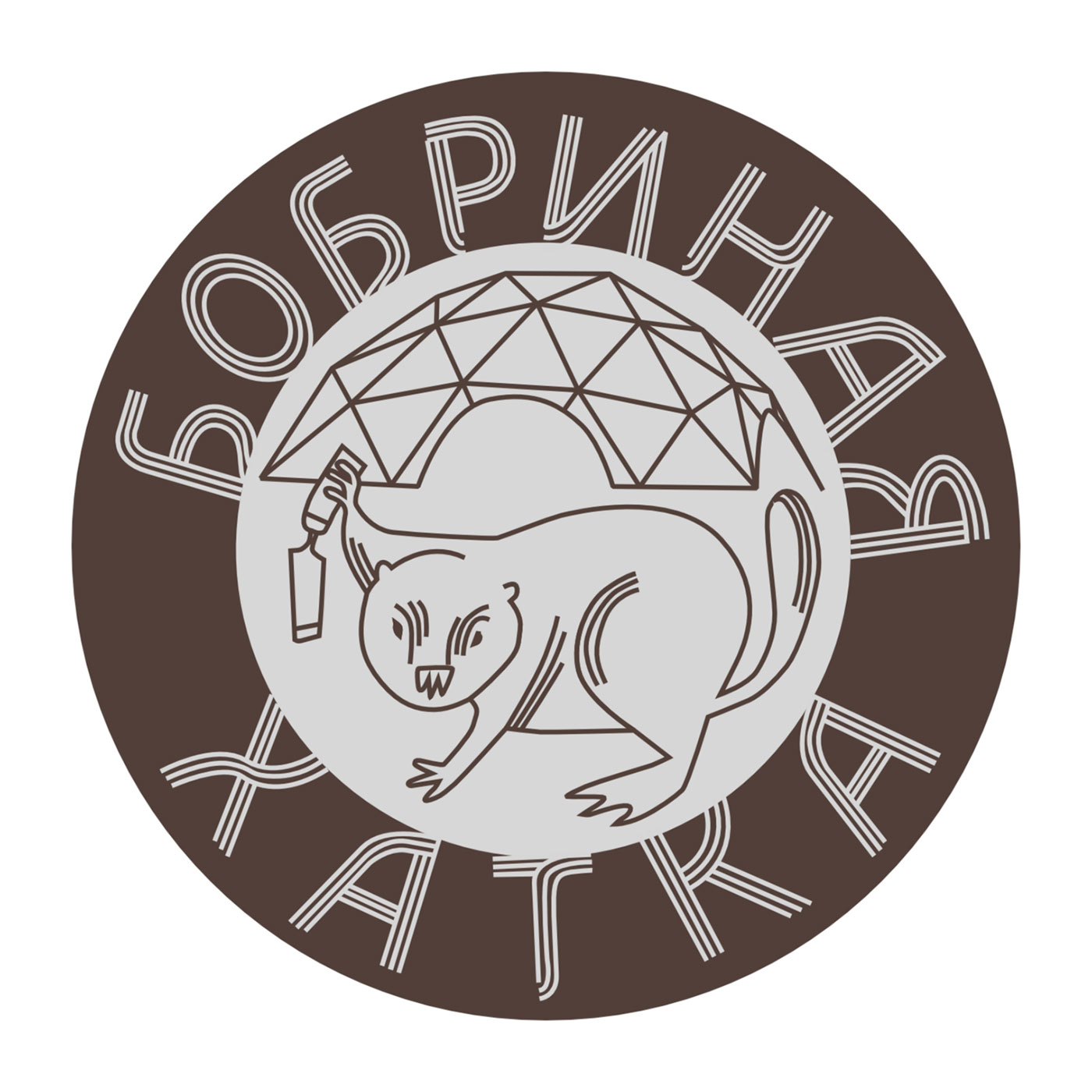
Can we walk through one or two images- for example the Beaver Den/cooperative movement graphic and the coyote image for the Ursula Le Guin translation. What were these made for? How did you choose the images/subjects? What is your process like?
I try to get involved in the co-operative movement here in St. Petersburg, mainly with «Rassadnik», our urban plant food growing cooperative. «Bobrinaya Khatka» (Beaver Den) is a friendly woodworking cooperative, and I made this logo for them.
The other one is an illustration for a translation of Le Guin’s essay « A Non-Euclidean View of California as a Cold Place to Be». Since the subject of the essay is utopian books and utopia, I made a graphic that imitated a book cover’s layout. Now real, actual printed, copies of the book are on the way.
Both images depict animals pictured as non-anthropomorphically as possible, though the beaver has a chisel. The Сoyote, a trickster from indigenous folklore and the hero of this Le Guin essay, is pretty much my dog Erka. It usually takes me a long time to figure out what to depict and how to put everything on a drawing plane, but both of these were easy. There were detailed instructions from the cooperative about the logo. And I did the Le Guin cover in one day having in mind some recent drawings for a brochure on careful communication with dogs (a collaboration with Daria @hearthedogs who wrote the text, and I illustrated, did the layout, and edited).
All the pictures are always done in pencil, then almost all are redrawn in the free vector editor «inkscape» on a laptop with «linuxlite».
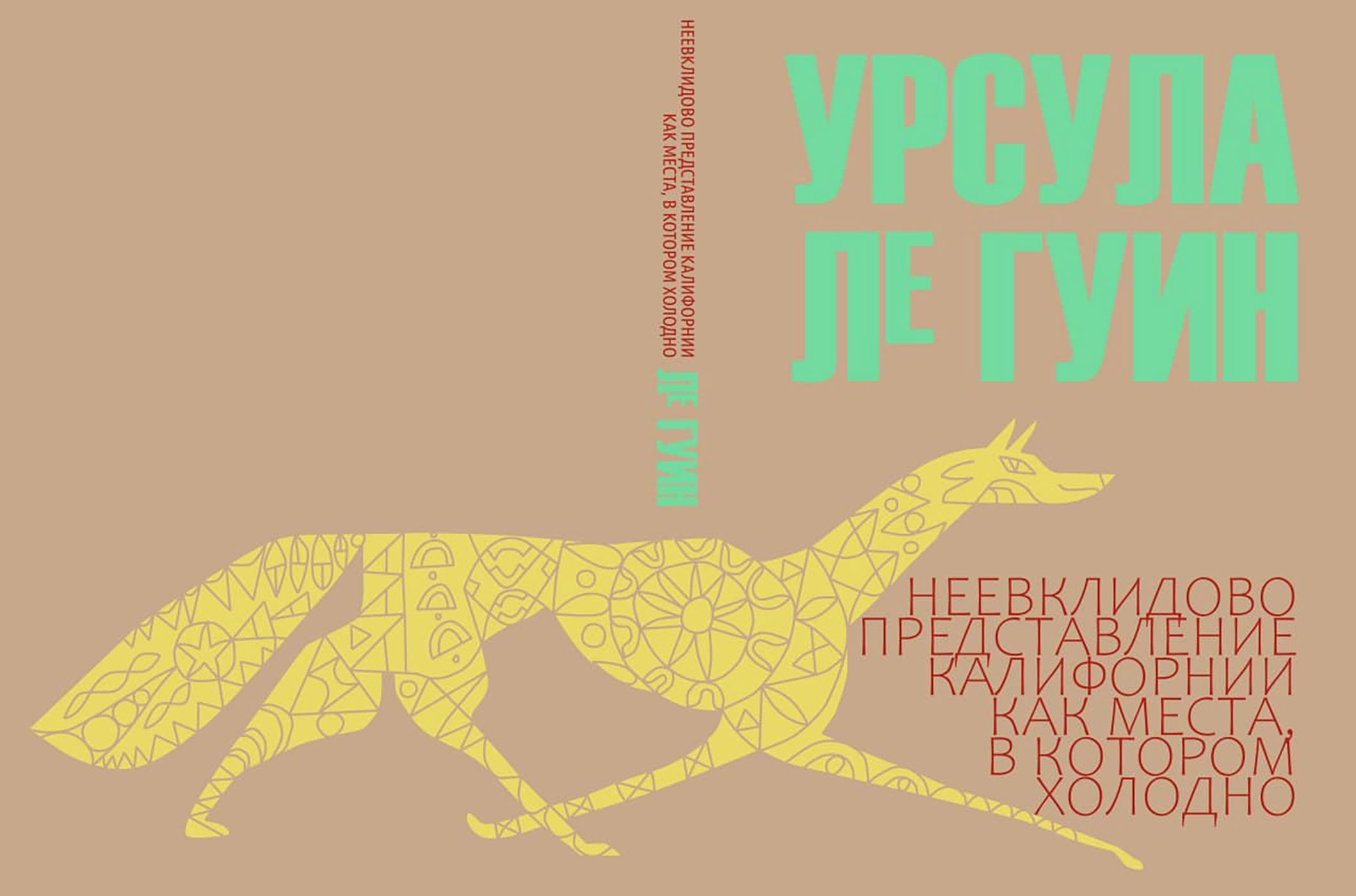
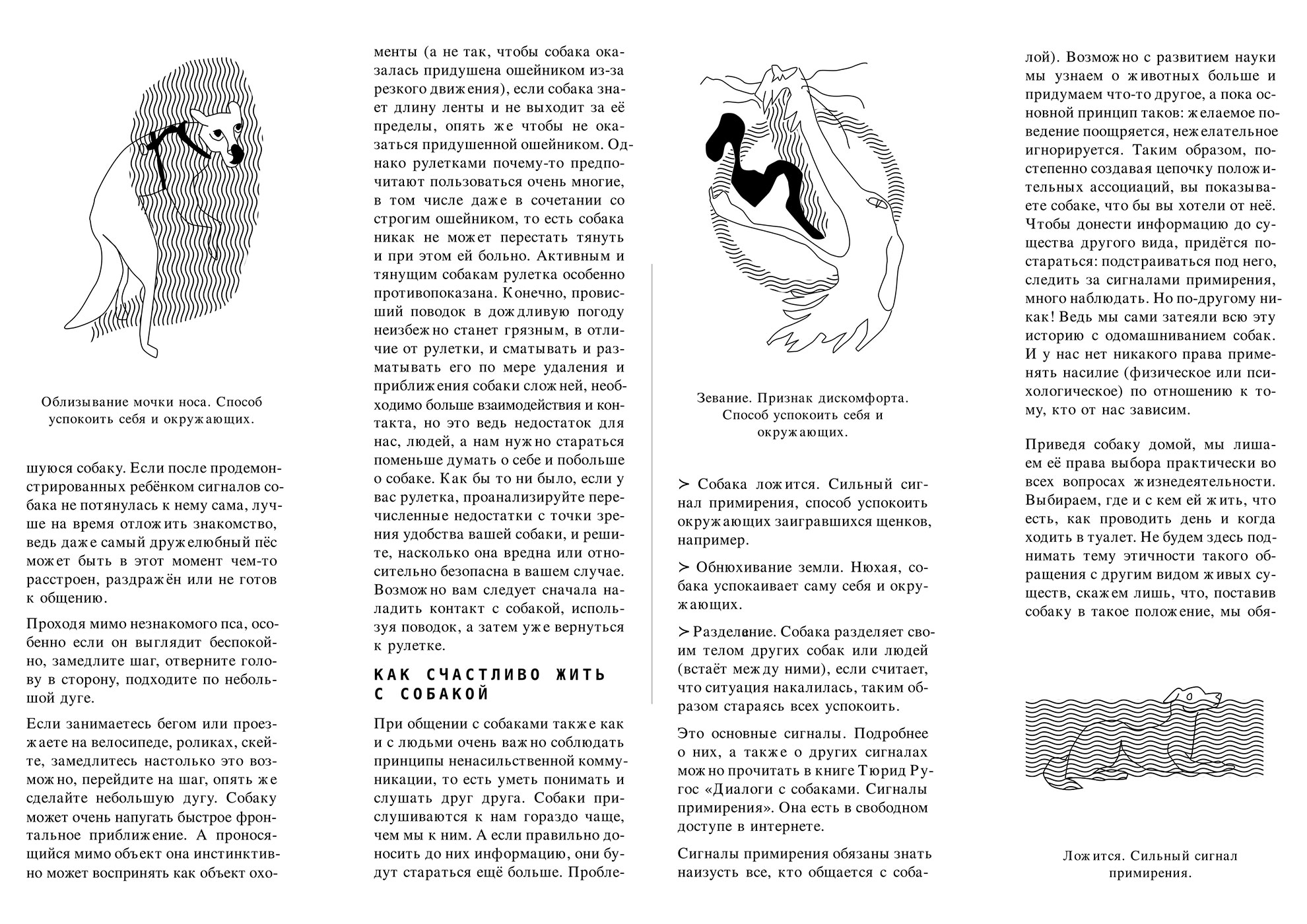
Я пытаюсь участвовать в кооперативном движении здесь, в Санкт-Петербурге, в основном с «рассадником», нашим городским кооперативом по выращиванию растительной пищи. «Бобриная хатка» — это дружественный столярный кооператив, и этот логотип я сделал для них.
Второй пример — иллюстрация к переводу эссе Ле Гуин «Неевклидово представление Калифорнии как места, в котором холодно». Поскольку темой эссе являются книги-утопии или об утопиях, я предположил, что такая имитирующая обложку книги картинка хорошо подойдёт. Настоящие материальные обложки к двум книгам — на подходе.
Обе работы изображают животных в максимально неантропоморфном виде, хоть у бобра и как будто стамеска. Койот, трикстер из фольклора коренных народов и герой этого эссе Ле Гуин — это во многом мой пёс Эрька. Обычно я мучительно долго придумываю, что изображать и как всё будет располагаться на плоскости, но это, пожалуй, самые лёгкие два примера. К логотипу была подробная инструкция, а обложку я делал за один день и псовых я много рисовал для нашей брошюры по бережной коммуникации с собаками (Дарья @hearthedogs готовила текст, я рисовал сигналы примирения, верстал и редактировал).
Все картинки делаются карандашом, потом почти все прорисовываются в свободном векторном редакторе inkscape на ноутбуке с linuxlite.
A lot of your work on instagram is tagged #solarpunk or #lunarpunk. WIll you discuss what these terms mean to you?
I am interested in exploring radical collective visions of a desirable future, most notably solarpunk, aerocene, and post-civ. Solarpunk is very well developed aesthetically, even though it is primarily in a literary form. Its images are mostly landscapes but artists tend to picture solarpunk landscapes as too technoid though still green. I find it interesting to reconfigure attention, to include non-human agents on an equal footing with human ones in the visual narrative, to concentrate on the small scale.
I like lunarpunk for its rootedness in darkness and wildness. It’s there in the colour palette as well. Lunarpunk is more chthulucenic. In my interpretation, it lacks esotericism and is thoroughly neo-materialist.
I find it difficult to imagine and make visible the multiplicity of different worlds that we can mutually create. But it is interesting, even though the complexity reduces the speed and number of finished illustrations.
Мне интересно исследовать акратические коллективные видения желаемого будущего, в особенности — соларпанк, аэроцен, пост-цив. Соларпанк очень хорошо разработан эстетически, хоть это в первую очередь литература, а его изображения, по большей части, — озеленённые, но по-прежнему техноидные ландшафты. Мне интересно перенастраивать внимание, включать в визульное повествование нечеловеческих агентов с человеческими на равных, концентрироваться на малом масштабе.
Лунарпанк мне нравится своей укоренённостью в тьме и дикости. Это есть и в цветовой палитре. Лунарпанк более хтулуценовый. Он в моей интерпретации лишён эзотеричности и в полной мере новоматериалистичен.
Мне сложно представлять себе и делать видимыми множественность различных миров, которые мы можем взаимно создать. Но это интересно, хоть сложность и сокращает скорость и количество готовых иллюстраций.
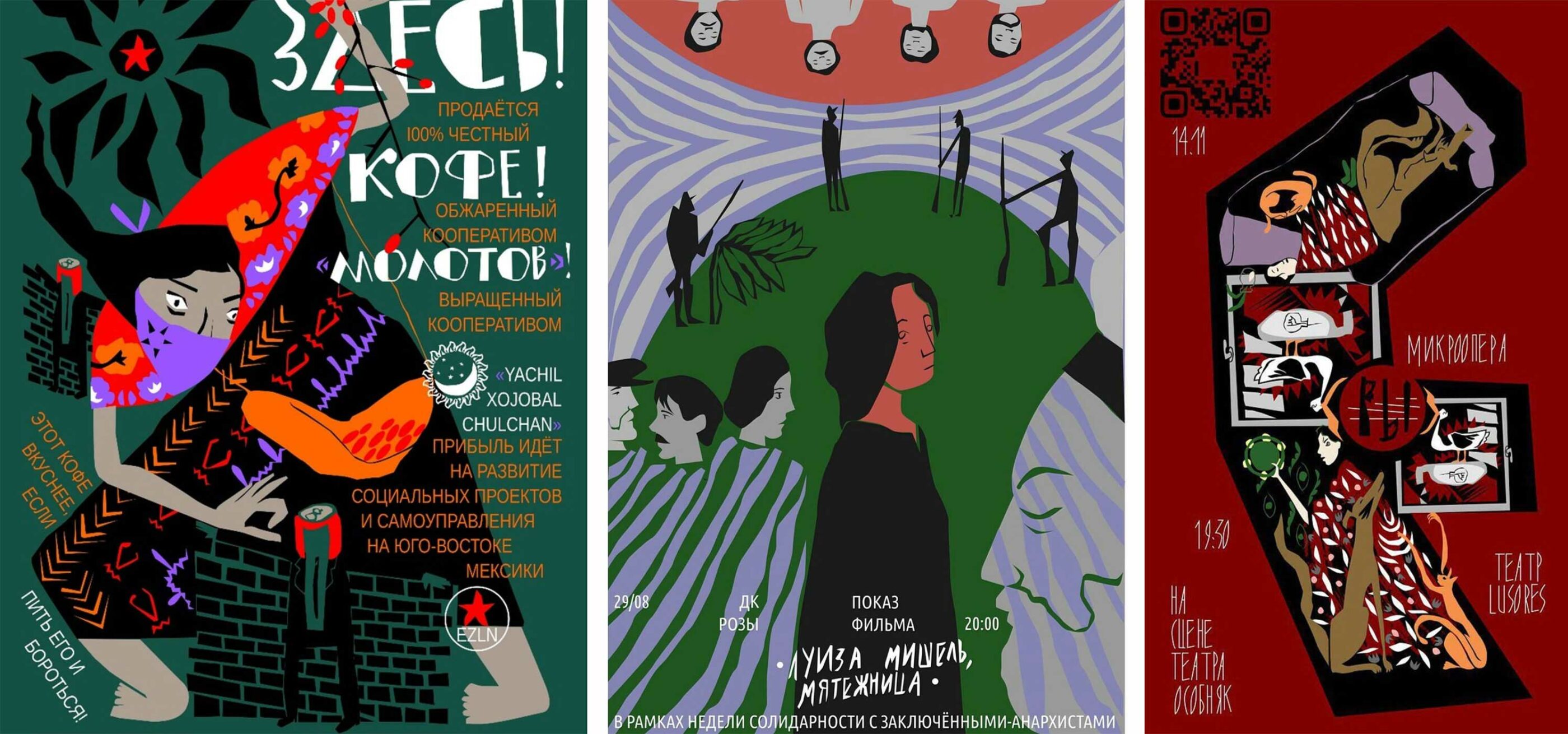
I see illustrations and some paintings. How do you get your work seen? Do you do a lot of illustration work? I also see a few images for a theatre- are you involved in theatre production?
I’ve made several posters for a theatre troop whose work I particularly appreciate. I would like to do more posters or illustrations for independent initiatives in the future. I don’t know where else to offer it other than instagram. All in all, my dream of becoming a book illustrator who chooses what to illustrate has come true. The secret is: no salary!
In general, people see my work if they search things like the radical potential of permaculture, about treesitters, or feminist de-growth. I also made a telegram stickerpack and printed a small number of postcards, although I almost never gave them out.
Я делал несколько афиш для одной театральной труппы, творчество которой особенно ценю. Я хотел бы делать в дальнейшем афиши или иллюстрации для независимых инициатив. Не знаю, где об этом написать, кроме инстаграма. В целом моя мечта быть книжным иллюстратором, который выбирает, что иллюстрировать, сбылась. Весь секрет — никакой зарлаты!
В общем люди видят мои работы, когда решают почитать про радикальный потенциал пермакультуры, триситтеров или феминистский дерост. Кроме того я сделал телеграм-стикерпак и напечатал небольшое количество открыток, хотя почти не раздавал их.
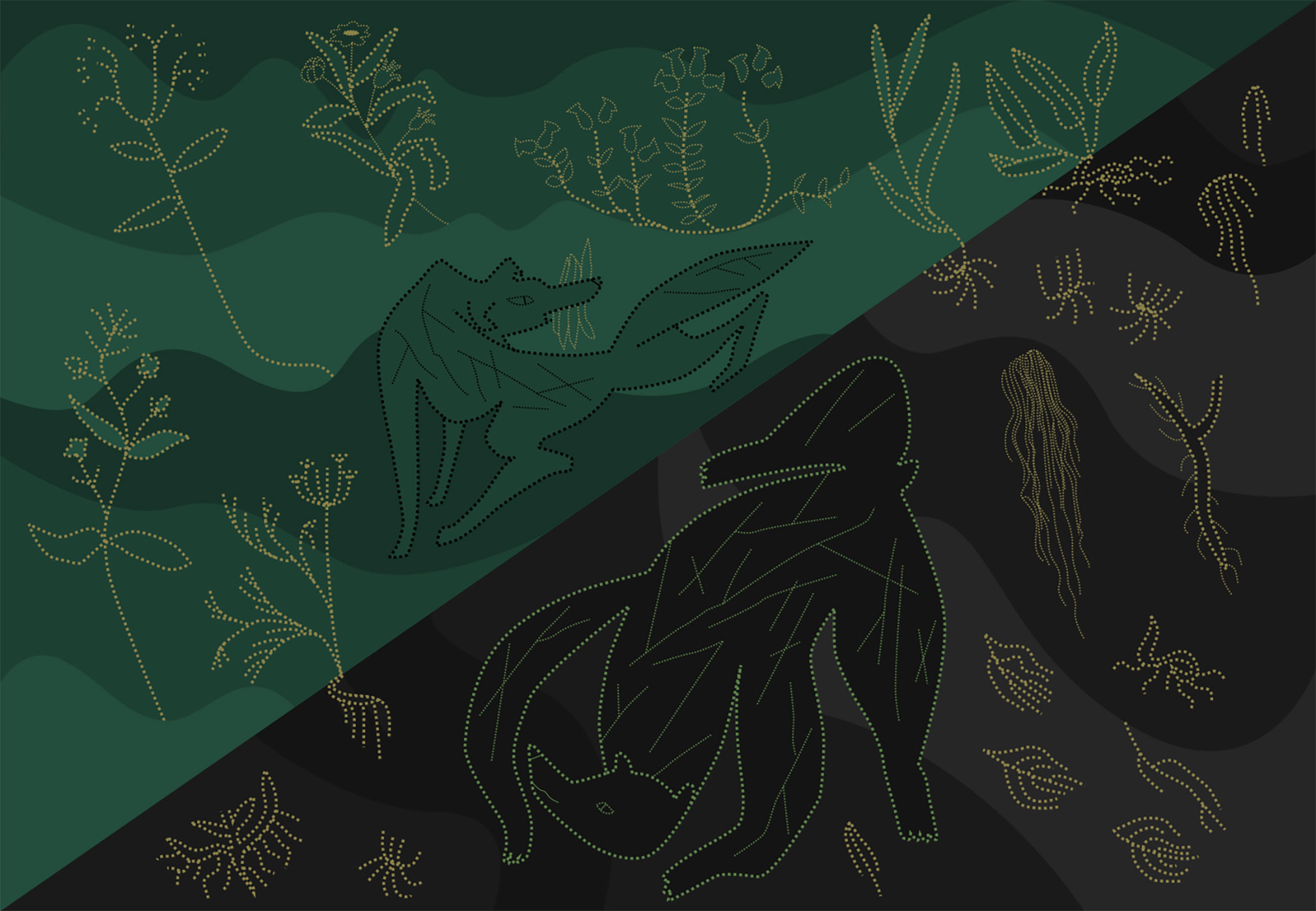
Are you working on any projects right now that you are excited about and want to share?
I want to make at least one animation short, one children’s book and do more street art. I also really want to get involved into making and printmaking. This is now possible, because it looks like there are some other people interested and a place with the necessary equipment to do this.
Я хочу сделать по крайней мере одну короткометражную анимационный фильм, одну детскую книгу и делать больше стритарта. Также я очень хочу заняться изготовлением и печатью плакатов. Теперь это возможно, потому что похоже есть родственные души и место с необходимым оборудованием для этого.
Who are some artists (living or dead) from Russia that have inspired you, that everyone should know about?
I am of course inspired by the Soviet school of book illustration, a very versatile one. In the 90s there was a wonderful art group called zAiBi. The first inspiring contemporary anarchist illustrator in the post-Soviet space for me was David Chichkan. For a long time I’ve been following the unique and wonderful artists @asho.youtz and @dima_hlcl .
Я конечно же вдохновляюсь советской школой книжной иллюстрации, очень многогранной. В 90-е существовала чудесная художественная группа зАиБи. Первым вдохновляющим современным анархистом-иллюстратором на постсоветском пространстве для меня был Давид Чичкан. Долгое время слежу за самобытными чудесными @asho.youtz и @dima_hlcl .
Anything else you want to add?*/
Some questions I often ask myself can be added. How to reject human exceptionalism and portray the human being as just a participant in the processes on the earth? How can we make simple and terse illustrations not look like those put in corporate brochures? Am I helping enough a person who rescues dogs from chains using direct action who doesn’t even call herself an anarchist?
Можно добавить вопросы. Как отринуть человеческую исключительность и изображать человека как лишь одного из участников процессов на земле? Как при лаконичности не сделать иллюстрации похожими на помещённые в корпоративные брошюры? Достаточно ли я помогаю человеку, которая прямым действием спасает собак с цепей, даже не называя себя анархисткой?
Where can people find your work?
On my instagram, but probably someday on fediverse under the name kotdokhlot. Also on the <<ecopraxia>> telegram and we will probably someday soon be on fediverse too.
В инстаграм, но наверное когда-нибудь и в fediverse под именем kotdokhlot. В телеграме «экопраксии» и скоро в fediverse.
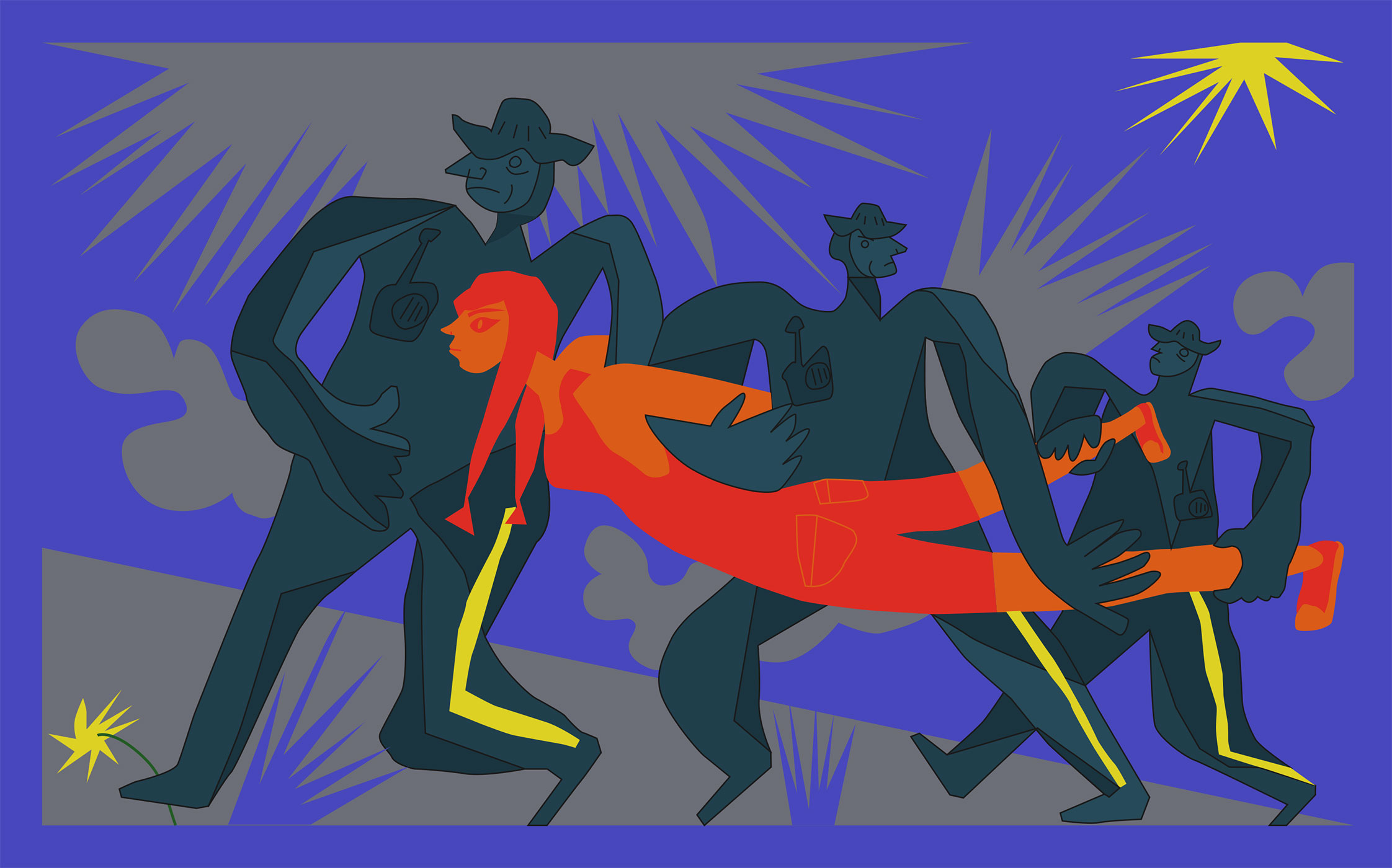

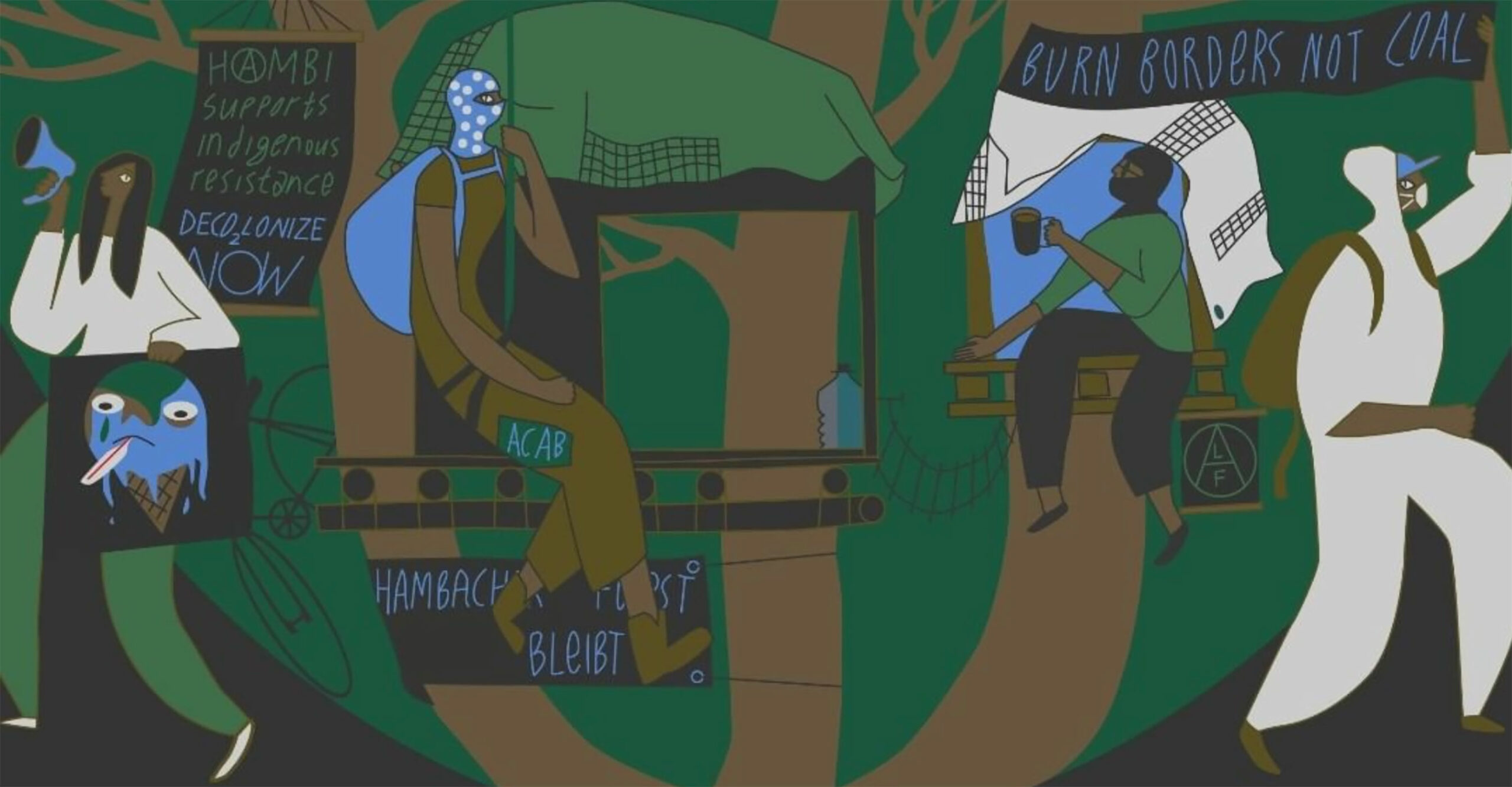
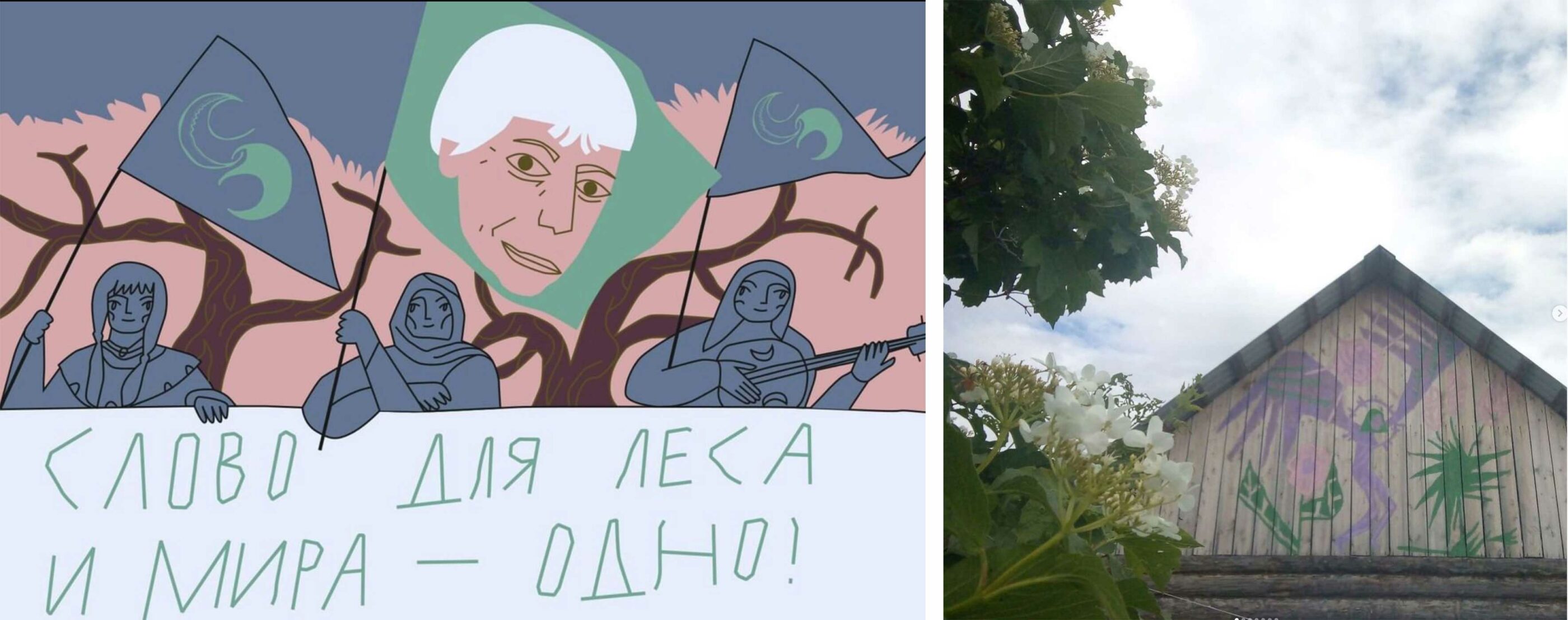
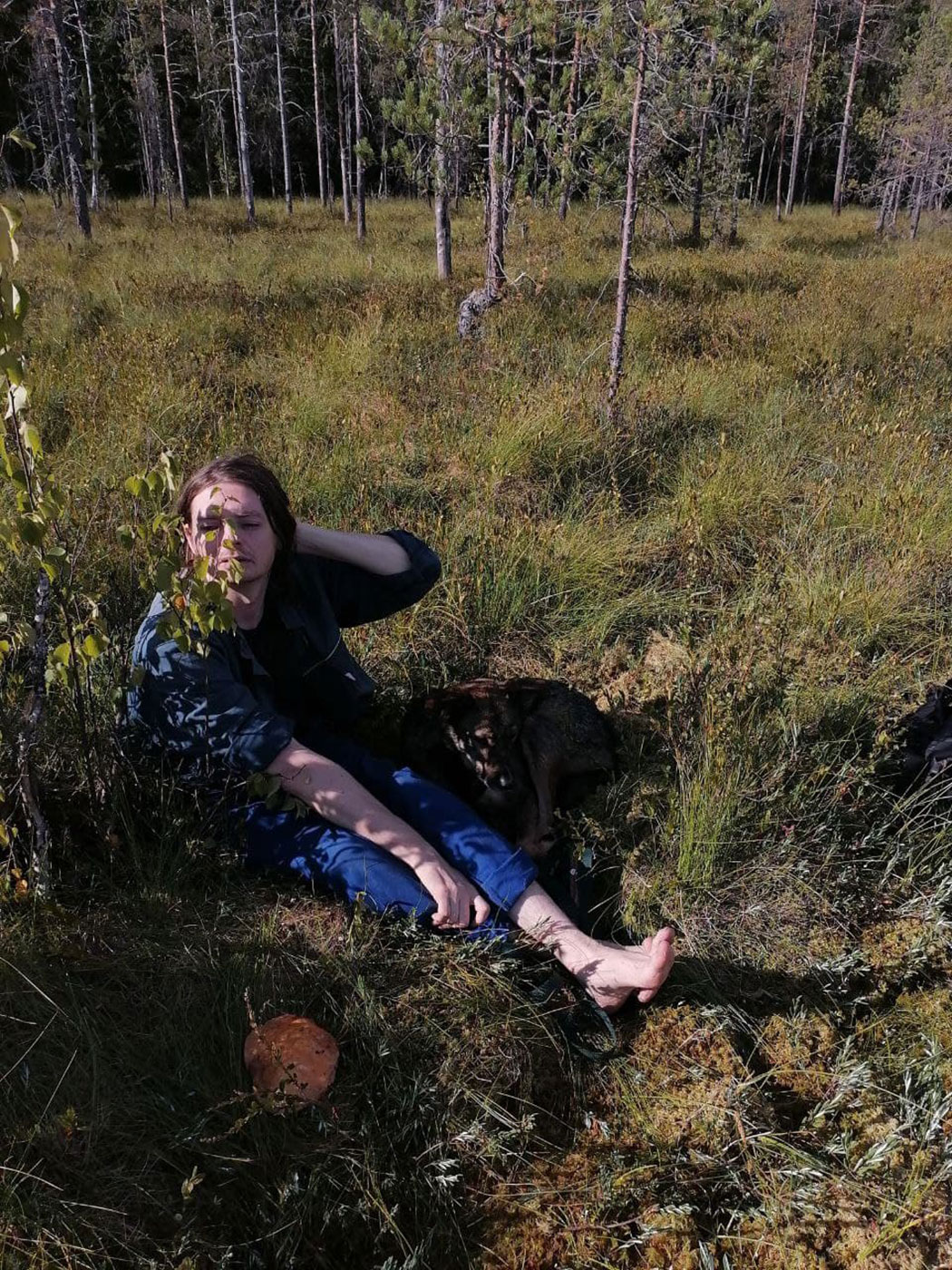
Signal: A Journal of International Political Graphics & Culture is the collective project of Josh MacPhee and Alec Dunn. All copies of Signal are available for sale here on Justseeds.
Translations done by eevan (thank you!). Interview conducted via email in December, 2021.
